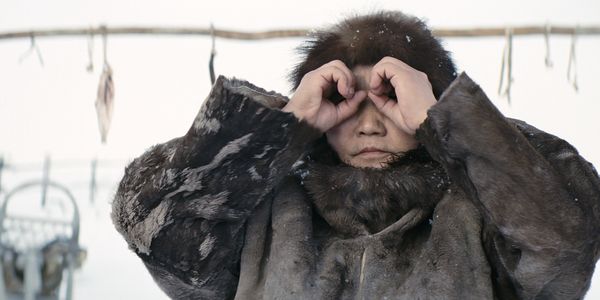ÁGA: The Last Family On Earth

Soham Gadre is a writer/filmmaker in the Washington D.C. area.…
The biggest surprise of 2019 is Milko Lazarov’s Ága. Premiering at Berlinale as the closing film of the festival, it hasn’t made much stride in terms of a worldwide release, but it is the singularly most informative film I can think of that came out this year.
I don’t really like calling films “important” socially and politically because I think the term is overused to diminished results and that it generally overstates any realistic reach that cinema can have in direct action. However, there are films which gain an importance from showing us a people, a land, an existence that has become ever more rare but ever more important to the state of our species.
People of the Land
Indigenous people in films are usually depicted as the proxies of colonialist genocide. Their existence in much of cinema is generally reserved to be the victims of the histories of “bad” white men. As much as something like Terrence Malick’s The New World can be appreciated for the fact that it did not reduce Pocahontas and her people to mere novelty items, and gave them the same density as John Smith and his folk, the movie still enters the pitfall of trying to recreate a history which itself has been co-opted and passed down by the “winners” (i.e. colonialists).

In Ága, we’re introduced to a barren and almost uninhabitable tundra. In it live a couple whose existence is hanging on a thread to the traditions of their ancestors, amid the affects of climate change. Wife and husband Sedna and Nanook (an obvious reference to Robert J. Flaherty’s Nanook of the North) go through their daily rituals of catching and curing meat, building tools, making hand-made clothes and furnishings for their modest yurt, and talking about their daughter Ága who left the family following a dispute.
A Lost History on Film
While Flaherty’s film, a documentary of Inuit life, came under controversy for having staged scenes, Ága is a fictional narrative that can be easily mistaken for a documentary. Filmed in 16mm and on location in Yakutia, the movie depicts an unmistakable realism in the existence of its characters. Much of this is via the virtue of having cast actual indigenous actors for the roles, who know the traditions themselves.

Mikhail Approsimov and Galina Tikhonova, who play Nanook and Sedna respectively, are Sakha people and theater actors. Their interactions are sparse but they are genuine and deeply reflective of a long-lasting relationship, where the silences between words and sentences reveal more than what is said. Sedna wants Nanook to rekindle the relationship with their estranged daughter.
With the weather slowly getting warmer year by year, and the the flora and fauna shifting populations, it is becoming harder for the couple to maintain their traditions on the land. The push towards assimilation into modernity is growing inevitable.
Hanging onto the Roots of Tradition
Director Milko Lazarov describes the film as the story of “the last family on Earth”. The metaphorical connotation is that the roots of tradition, the line that ties us back to the origins, is being severed. We are building more and more technologically advanced defenses against problems we ourselves have created.
When Mikhail embarks on his quest to seek out his daughter, he goes from the isolation of the tundra to the brink of modern civilization. Here, the movie makes its ecological case clear.

The truck driver who gives Nanook a ride is a Sakha native as well, but an assimilated one. His ideas of preservation, hunting, and the natural connection between humans and the animals they eat, mimic those of us who have never lived off the land. Nanook doesn’t say anything to him because he knows there is no stopping this. The helpless sigh he gives and the look he darts at the truck driver signal an acknowledgement that man is lost.
Ága: Conclusion
Ága is representative of the way we forget our own histories. Native practices of conservation, sustainable living, and a deep and respectful connection to the land is all but withering away in the face of our technological acceleration. Our solutions for survival are constantly looking forward instead of looking back.
Have you seen Ága? What did you think? Let us know in the comments below!
Ága was released in theaters in the US on September 4, 2019. For all international release dates, see here.
Does content like this matter to you?
Become a Member and support film journalism. Unlock access to all of Film Inquiry`s great articles. Join a community of like-minded readers who are passionate about cinema - get access to our private members Network, give back to independent filmmakers, and more.
Soham Gadre is a writer/filmmaker in the Washington D.C. area. He has written for Hyperallergic, MUBI Notebook, Popula, Vague Visages, and Bustle among others. He also works full-time for an environmental non-profit and is a screener for the Environmental Film Festival. Outside of film, he is a Chicago Bulls fan and frequenter of gastropubs.













